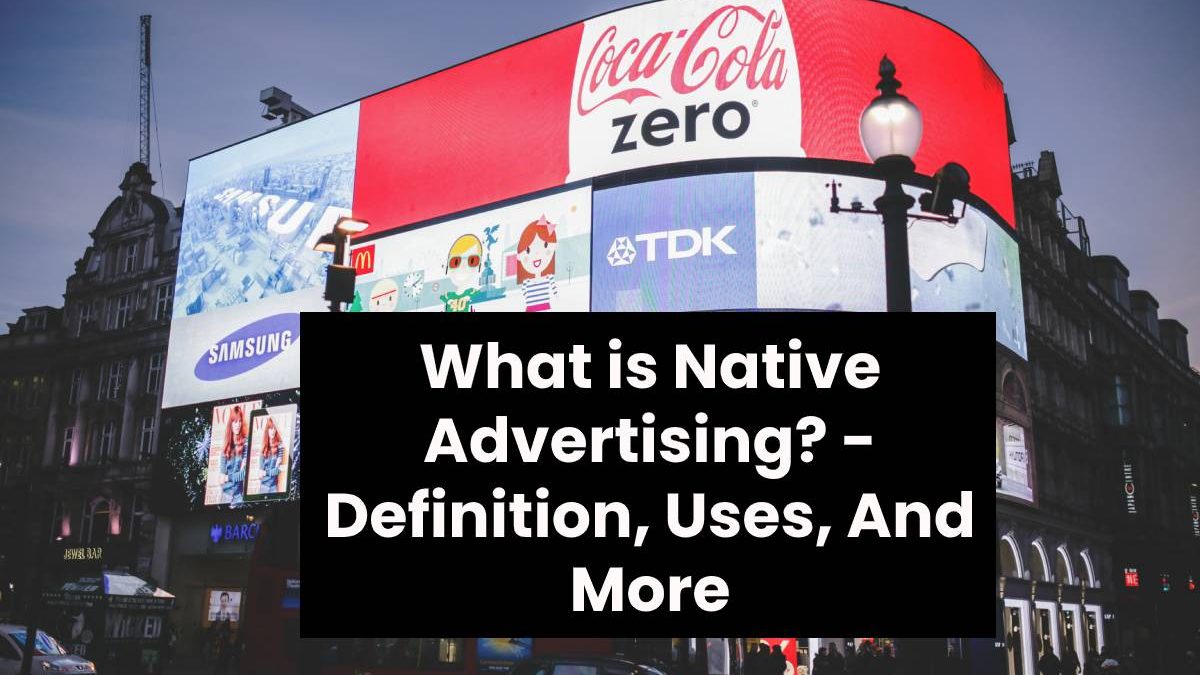Table of Contents
Definition Native Advertising
Native advertising is a new trend that is booming in online advertising. This alternative appeared in the United States, just a few years ago, in the face of a changing advertising context in which traditional online formats are becoming less and less effective.
How to use Native Advertising?
Native advertising consists of including an advertisement on a website or platform respecting its format and editorial style. That is, our advertisement must get adapted to the rest of the content published on the site, it must fit organically with the information that accompanies it.
The essence of native advertising is the same as that of cinematographic product placement. It is preferable to include the product in the plot rather than interrupt the film with an advertisement. In the celluloid world, this practice began in the 1930s.
Also read: What is Broadband? – Definition, Functions, Types, And More
The Characteristics of Native Advertising are:
- Advertising offers something interesting: advertising is part of the content and adds value to the site.
- It is entertaining and entertaining.
- It is related to the interests and expectations of users.
- They integrates perfectly into the site and does not hinder or interrupt the browsing experience; the ad does not move, blink, or appear suddenly.
- Explicitly specifies that this is advertising content.
- Native advertising differs from other marketing strategies in that it is respectful and non-intrusive. The ethical treatment of users is highly valued by users, which considerably increases the probability that they will remember the brand or product in the future.
There are two types of Native Advertising:
closed
Its diffusion is limited since the contents get published on a platform through a specific profile.
Open
All platforms that share thematic or target audience participate so that the same content can get promoted in different media at the same time.
Examples of native advertising
The advertorial
It may or may not be online, and it has the appearance of the medium where it appears, a very similar design, and even the same, in other words, just by removing the brand name, it would pass through the content of the medium. When it is online, it is usually had the tag “sponsored content” and has a clear call to action.
The online video advertorial
It is the same as an advertorial but in video format, with no twist and turns. There were Campaigns with a high impact on YouTube during 2013.
Sponsored content
It is the content that creates a medium and a paid brand, it doesn’t have a clear call to action, unlike advertorial, so it serves more as brand recognition. It can be used in conjunction with banners of the brand in question to get site visits and conversions.
A single sponsor
You can sponsor a magazine, a chapter in a series. You don’t usually have a clear call to action; it is more about brand recognition.
Brand content or brand journalism
The only difference between branded and sponsored content is that the brand creates the content for the medium.
Product Placement: placing products in a “covert” way, say, for example, watching a chapter of a series or a movie and a well-known brand of milk or soft drinks appears, it is not accidental, it is native advertising. In the online world, it also happens, even with articles where coincidentally, the keywords that position next to the brand name appear. PP example of «LG smartwatch.»
Feeds ads
Ads or highlights that recommend content from other websites, under the same look & feel of the website from which they appear.
Also read: What is Advertising Banner? – Definition, Types, Formats, And More

